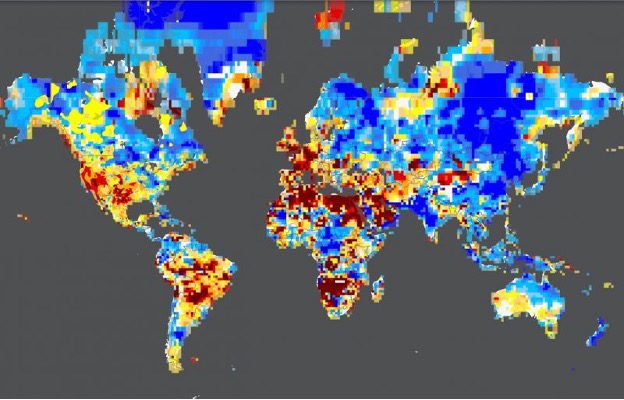Water, the vital fluid for all known living organisms, is one of the most discussed issues for both agricultural producers and consumers, and with good reason. Drought and falling water levels are crippling many regions of the world. In the U.S., more than six of every 10 acres are experiencing drought. In parts of Europe, the story’s much the same with crop loss predictions due to heat and lack of rainfall. Some good news is that many novel technologies exist that may improve water management and impact crop production. These innovations range from sensors above and below ground to salinity reduction and superabsorbent seed coatings.
Technologies that improve water use aren’t new. Both public and private researchers continually work to improve both water use and water quality. Key technology advancements related to water are giving farmers the resources they need to farm in a drier future.
Variable rate and subsurface irrigation systems now can gauge soil water and crop need to apply only amounts needed. With more than 54 percent of U.S. farms having some type of irrigation, this technology is an important one. It can reduce the amount of water applied through irrigation from variable rate sprinklers, which has even evolved to precision irrigation that can apply water where remote sensing determines moisture stress.
However, irrigation may create another issue: salinity from low quality water. Removing salt from irrigation water and the soil is a long-known production problem.
One company devoted to game-changing technology for optimizing water efficiency is AQUA4D®. This Swiss-based firm has more than 5,000 installations in more than 40 countries for use in various agricultural settings as well as sports and landscapes. The company’s technology keeps soils moist longer, for an average water savings of 25-30 percent while also improving dissolution of minerals and fertilizers in irrigation water. Promoting water penetration into the micropores of the soil, AQUA4D® is the only water-smart technology that manages salinity while saving water in the process, even allowing irrigation with brackish or poor-quality water. One landscapes manager reported the system as affordable with a positive impact on the water droplet size that rolls off leaves causing less burning. An owner of a lemon plantation had poor water and salinity issues; his use of AQUA4D® positively impacted productivity, with no more leaf scorching or crystallization of salts.
Salinity often is invisible, but costly. Other researchers attacking this includes a Canadian company, BioAgronics, offering Soil Smart Solutions™. Their focus on soil health involves several steps to success. Soil sampling is just the beginning to determine soil condition and how to move toward a balanced soil physically, chemically and biologically. Their mantra is to reduce risks by addressing specific challenges. One critical challenge is salt that reduces the plant’s ability to uptake water and nutrients, reduces the activity of soil micro-organisms, and alters soil structure. The BioAgronics product line ranges from soil building with microbial nutrients and minerals to soil conditioning for improved water infiltration, drainage and salt leaching below the root zone.
Recently, AgriThority® and University of Nebraska – Lincoln researchers conducted an independent trial that showed the Irriga Global platform used 25% less water than other leading irrigation management platforms in the U.S. – but achieved the same yield with no added crop stress.


Crops bred for drought tolerance or resistance have stronger root systems for enhanced water absorption, but other tolerances can impact water management as well. Sorghum is naturally more drought tolerant than corn and its breeding for improved yield, pest resistance and cold tolerance gives this crop better production potential. Another example is more cold-tolerant cotton varieties that can be grown further north with acceptable yield but with less irrigation than required by corn.
Enhancing water availability for seed emergence with seed coatings is another technological advancement. While much research has focused on seed treatments, one seed coating technology developer is devoted to water absorption. Pewas is an organization based in Slovakia researching uses of superabsorbent polymers for various industries. For more than 10 years, their team has studied the effect of polymers and hydrogels on seeds and agricultural substrates. CEO Ivo Krpelan describes their Aquaholder Seed as a hydrostimulation treatment of seeds. The purpose of this coating layer is to bind moisture from the soil after planting to form a layer of hydrogel around the seed. Acting as a water reservoir, this moisture can improve germination and emergence. Tests conducted with spring barley indicated better root systems compared to uncoated seed. The company is continuing development to ensure application ease and seed safety.
As the world continues to grapple with water-related issues, new technologies are helping growers to supply the food, fuel and fiber needed while reducing water use.
To help move your water-use efficiency technology to market, add AgriThority® to your team for technical depth and business breadth. Trust our native guides to fuel your growth into uncharted territory.




